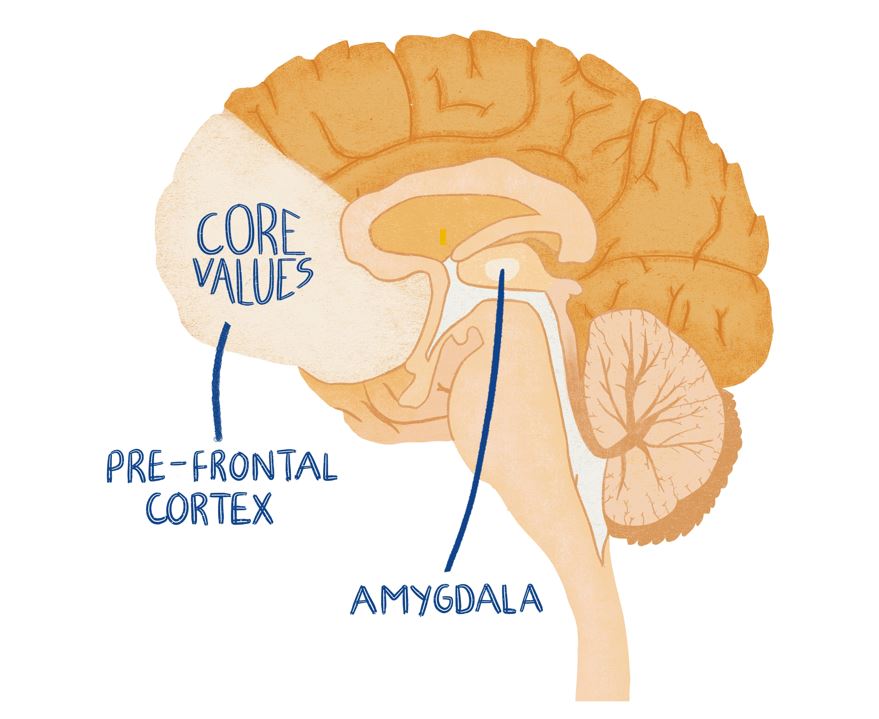When looking to understand what makes good workplace environment, Goleman’s work on Emotional Intelligence is a good place to start. But in a corporate world that is rapidly evolving to be flatter and less command-driven we should also aim to directly educate employees at all levels about emotional intelligence. To do this effectively we need to remove the jargon and talk in terms which are practical to the modern workplace.

First let’s take a look at why Emotional Intelligence (EQ) is important at work. It’s not just good for the individual, it’s also good for the business.
“Studies have shown that people with high EI have greater mental health, job performance, and leadership skills…Since its popularization in recent decades, methods of developing EI have become widely sought by individuals seeking to become more effective leaders”.
It stands to reason that if your leaders improve their levels of EI/EQ, your workplace environment will improve. That’s certainly my own experience. And my own experience also shows that when my managers have had high levels of EQ, my motivation and effectiveness were significantly (I would estimate up to 50%) higher.

So for those of us who need a reminder, these are the 5 main competencies or pillars of emotional intelligence:
- Self-awareness – the ability to know one’s emotions, strengths, weaknesses, drives, values and goals and recognize their impact on others while using gut feelings to guide decisions.
- Self-regulation – involves controlling or redirecting one’s disruptive emotions and impulses and adapting to changing circumstances.
- Social Management – managing relationships to get along with others
- Social Awareness – considering other people’s feelings especially when making decisions
- Motivation – being aware of what motivates them.
“What Makes A Leader” by Daniel Goleman, best of Harvard Business Review 1998
That’s all fine and well when teaching MBA or CIPD students, but what the academia fails to recognise is that in the world of EQ we are all leaders to some extent. Granted that the higher up the management tree, the more impact that employee is likely to have, but a rotten apple anywhere in the barrel will ultimately eat away and destroy a workplace culture.
Your workplace culture is the sum of all of the interactions of all of the staff in your organisation. Interactions of the leaders at the top of the organisations tend to have more impact as they reach more staff either directly or through cascading. However, there are those in an organisation whose personal impact is positional not power-related.

For example, we had a receptionist in our HQ offices. I’ll call her Tanya (because it’s her real name). Tanya was always positive, smiling, ready with encouragement, a piece of advice or even to shed a shared tear with the staff who passed through every day. I often used to pass though reception instead of via the door from the car park just to get a morning boost from Tanya’s energy and I estimate that this could make as much as 10% improvement to my productivity that morning – and with an additional knock on effect to those around me.
Imagine if 100 staff who passed through reception received a 1% boost from their morning interaction with Tanya it would mean that her personality would have contributed the equivalent of a whole employee in terms of productivity… even before handling a single visitor or telephone call.
The message here is that in an emotionally intelligent organisation, we are all leaders, irrespective of where we sit in the corporate hierarchy. Robin Sharma elaborates this in his fable “The Leader who had no Title”.
“You say Solanum lycopersicum, I say Tomato”
Therefore when we talk about EI and EQ, we need to appeal to all levels and that means using language that resonates with all levels in the company.

Take self-regulation for example:
Self-regulation – involves controlling or redirecting one’s disruptive emotions and impulses and adapting to changing circumstances.
To most of us that’s gobbledygook, written for MBA students or CIPD dissertations.
So what are we talking actually about when we talk about self-regulation in a workplace environment?
Self-regulation is what builds TRUST:
Self-regulation, or self control, means you are personally able to overcome your emotional or natural responses, to build levels of Trust with your managers and colleagues:
Trust that you will deliver your work on time
Trust that you will work conscientiously
Trust that you will treat your colleagues with respect
Trust that you won’t steal take that yogurt from the fridge hoping that no one will notice….

What is Self – Awareness in the real world?
Self-awareness in a work environment is what leads to APPRECIATION
Self-awareness means that you are able to evaluate and measure your own abilities, strengths & weaknesses against those around you. People who are self aware are humble and able to appreciate the contribution others make to their own success.
Appreciation that others may be have different skills that compensate yours
Appreciation that others may have to put in more effort for the same results
Appreciation of your own good fortune
Appreciation that your success depends on others
Appreciation that your actions may be interpreted differently by others and that doesn’t make them wrong

What exactly is Social Awareness at work?
Social Awareness flows from EMPATHY with your colleagues
Empathy with others’ feelings
Empathy with others’ situations
Empathy with others’ perspectives
Empathy with how your your actions and attitudes affect others

What is Social Management at work?
Social Management is TEAMWORK – building bonds that hold your colleagues together as a team so that they work efficiently towards the shared goals
Teamwork brings colleagues together
Teamwork encourages cooperation
Teamwork excludes no-one
Teamwork rejects bullying, coercion, fear and harassment.
So if you are wanting your team to understand the the importance of Emotional Intelligence in the workplace, stop talking to them about Self Awareness, Self Regulation, Social Awareness and Social Management and start talking about APPRECIATION, TRUST, EMPATHY and TEAMWORK – and the MOTIVATION will take care of itself.


Leave a comment